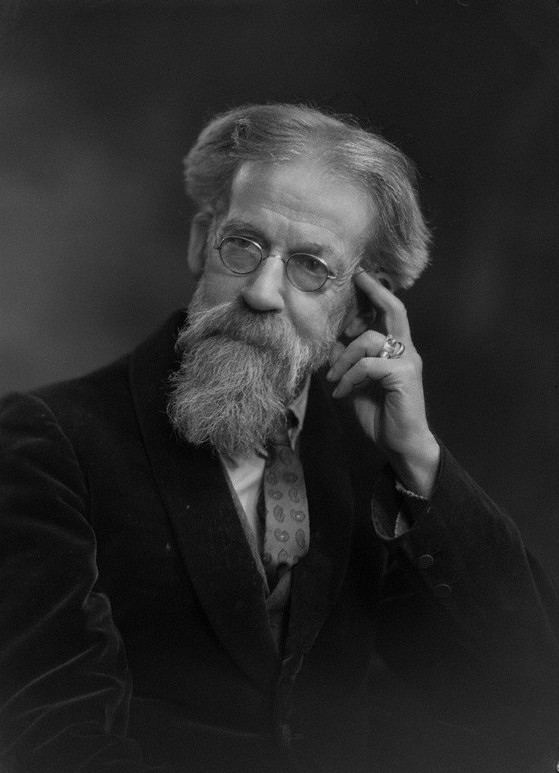Patrick Geddes (1854–1932), a pioneering urban planner and sociologist, profoundly influenced the way cities are conceptualized and designed. His contributions laid the groundwork for modern urban planning by emphasizing a holistic and ecological approach to urban development. Unlike many of his contemporaries, Geddes viewed cities as dynamic, living organisms, advocating for planning strategies that were deeply rooted in local geography, culture, and economy. His ideas remain relevant today, influencing contemporary urban sustainability, resilience, and smart city initiatives.
The Geddesian Approach to City Planning
At the core of Geddes’ philosophy was the belief that cities should be understood through an integrated lens—combining environmental, social, and economic factors. He introduced the concept of “regional planning”, which emphasized studying a city’s natural environment, history, and economic activities before formulating development plans (Meller, 1990). This was a departure from the rigid, top-down planning methodologies of the 19th and early 20th centuries.
One of his most enduring contributions is the Survey-Analysis-Plan method, which established a systematic approach to urban planning (Welter, 2002). Instead of imposing pre-determined solutions, Geddes argued that planners must first conduct detailed surveys of a city’s geography, people, and economic conditions before designing a plan that aligns with these realities. This approach is still foundational in urban planning education and practice today.
The Influence of Biology and Ecology on Geddes’ Thought
Geddes was trained as a biologist, and his background deeply influenced his understanding of cities as evolving ecosystems. He believed that just as natural organisms adapt to their environment, urban spaces should be designed to reflect and support the needs of their inhabitants. His ecological perspective anticipated many of the sustainability principles that underpin contemporary urban development, including green infrastructure, mixed-use development, and participatory planning (Hall, 2002).
His work in cities like Edinburgh, Tel Aviv, and Indore showcased his commitment to integrating natural landscapes with urban environments (Buchanan, 2015). In Indore, India, he implemented his ideas of conservative surgery—preserving existing structures and communities while making necessary urban improvements. This stood in stark contrast to the large-scale demolition and reconstruction projects favored by many of his contemporaries (Mumford, 1949).
Geddes’ Influence on Contemporary Urbanism
Geddes’ vision of sustainable and human-centered urban planning resonates strongly in the 21st century. His ideas are echoed in movements such as New Urbanism, Smart Growth, and Resilient Cities, all of which emphasize mixed-use spaces, walkability, local economies, and environmental integration (Taylor, 2013). Many global cities are now revisiting his principles as they grapple with issues like climate change, urban sprawl, and social inequality.
One of Geddes’ most significant contributions was his emphasis on civic engagement and participatory planning. He believed that city planning should be an inclusive process where residents actively shape their urban environments. This concept is now widely recognized in contemporary planning practices, where citizen involvement and community-led initiatives are seen as essential to creating livable and equitable cities (Sandercock, 1998).
The Legacy of Patrick Geddes in the 21st Century
Geddes’ legacy is visible in various urban sustainability frameworks that prioritize eco-friendly city design, heritage conservation, and community-driven urban development. Cities across the world are revisiting his ideas, particularly in response to the challenges of rapid urbanization and environmental degradation (Howard, 2014).
As urban areas expand, Geddes’ core principle—“Think global, act local”—is more relevant than ever. His emphasis on understanding the unique cultural and environmental context of each city serves as a guiding principle for modern urban planners seeking to create cities that are not only functional but also sustainable and socially inclusive.
Conclusion
Patrick Geddes was far ahead of his time, advocating for ideas that continue to shape urban planning today. His vision of cities as interconnected systems, his commitment to ecological and regional planning, and his insistence on participatory decision-making remain foundational in contemporary urban discourse. As cities evolve to meet the demands of the 21st century, Geddes’ principles provide a timeless framework for developing urban spaces that are both resilient and responsive to human needs.
His work remains a touchstone for urbanists, policymakers, and designers who strive to balance growth with sustainability, innovation with tradition, and global aspirations with local realities. As we look toward the future of city planning, Geddes’ insights remind us that the key to successful urban development lies in understanding, respecting, and working with the complex interplay of people, place, and environment.
References
- Buchanan, P. (2015). Geddes’ Planning Legacy: Conservation and Sustainable Cities. Routledge.
- Hall, P. (2002). Cities of Tomorrow: An Intellectual History of Urban Planning and Design in the Twentieth Century. Wiley-Blackwell.
- Howard, E. (2014). Garden Cities of To-morrow. Routledge.
- Meller, H. (1990). Patrick Geddes: Social Evolutionist and City Planner. Routledge.
- Mumford, L. (1949). The Culture of Cities. Harcourt, Brace.
- Sandercock, L. (1998). Towards Cosmopolis: Planning for Multicultural Cities. Wiley.
- Taylor, N. (2013). Urban Planning Theory since 1945. SAGE.
- Welter, V. (2002). Biopolis: Patrick Geddes and the City of Life. MIT Press.
